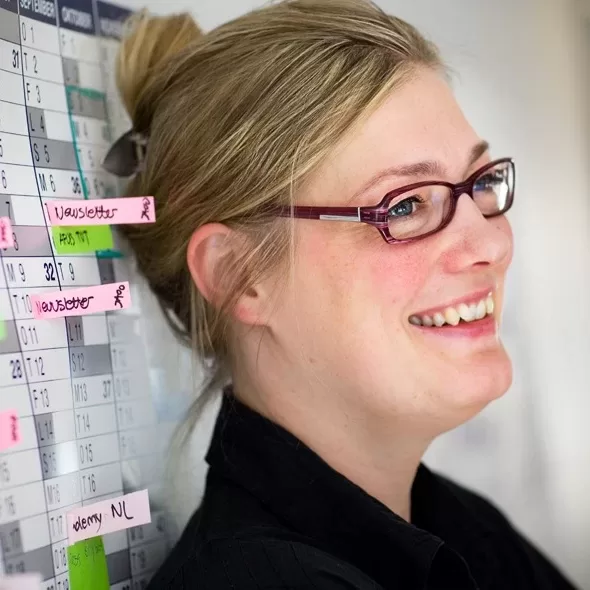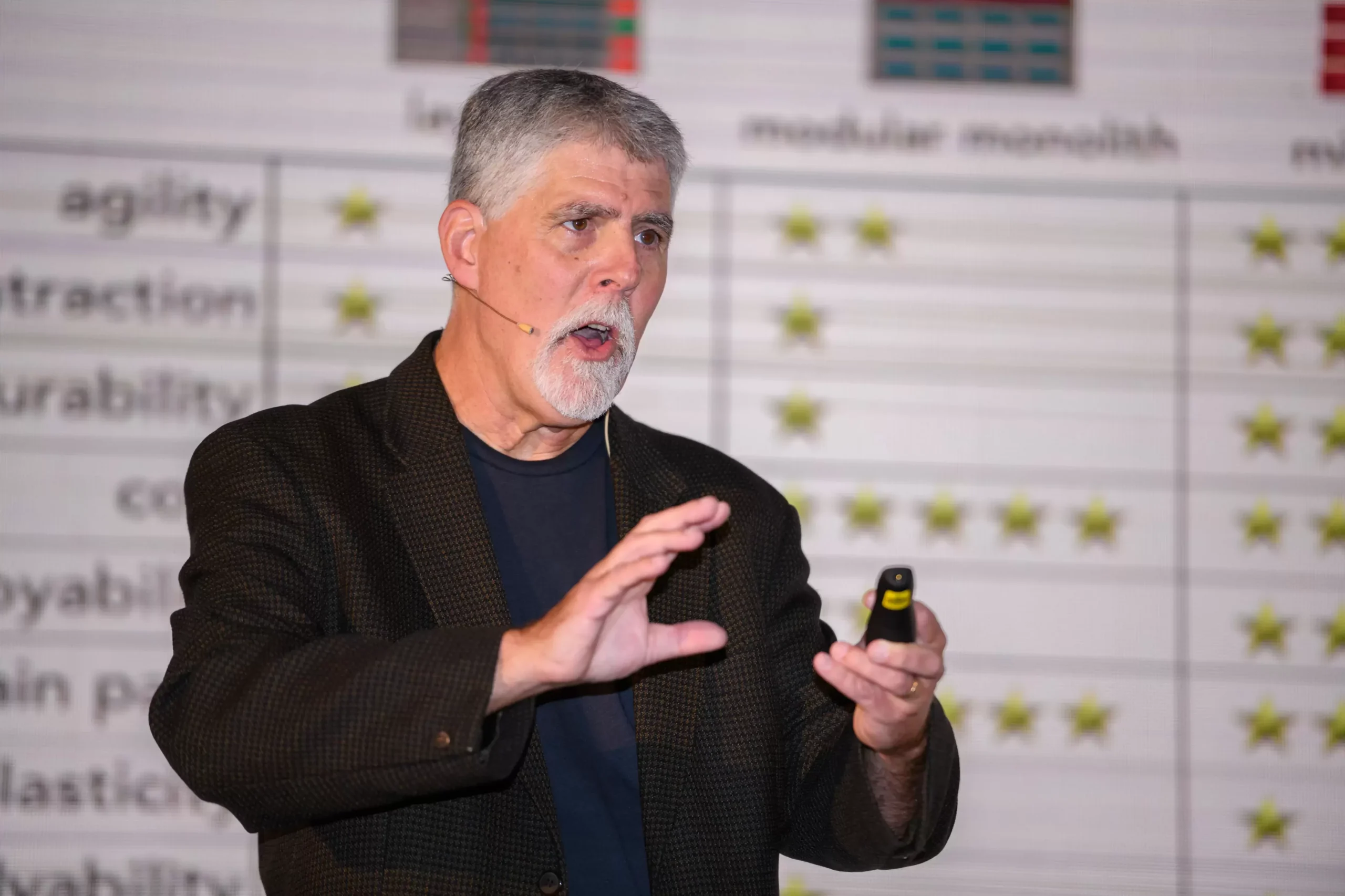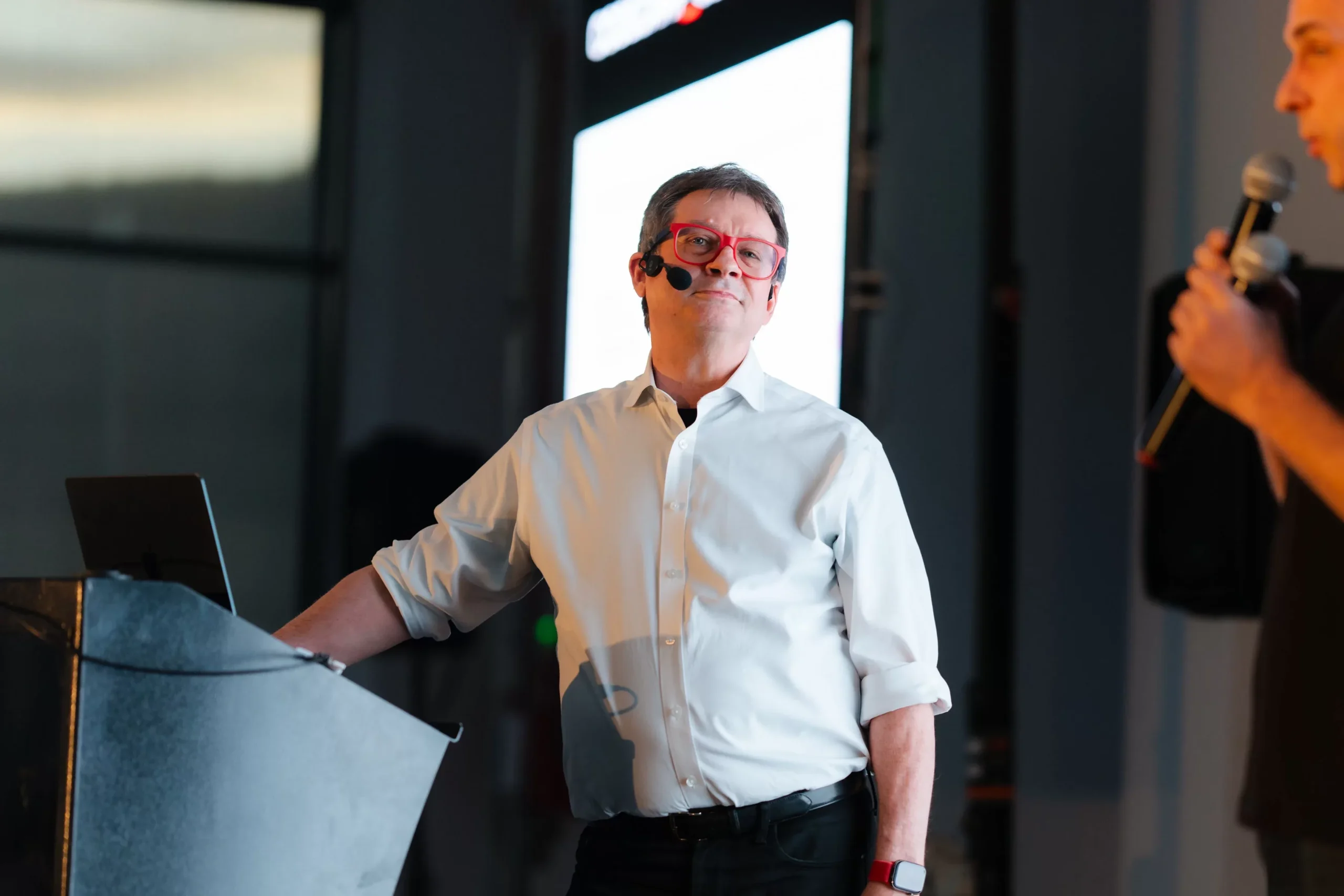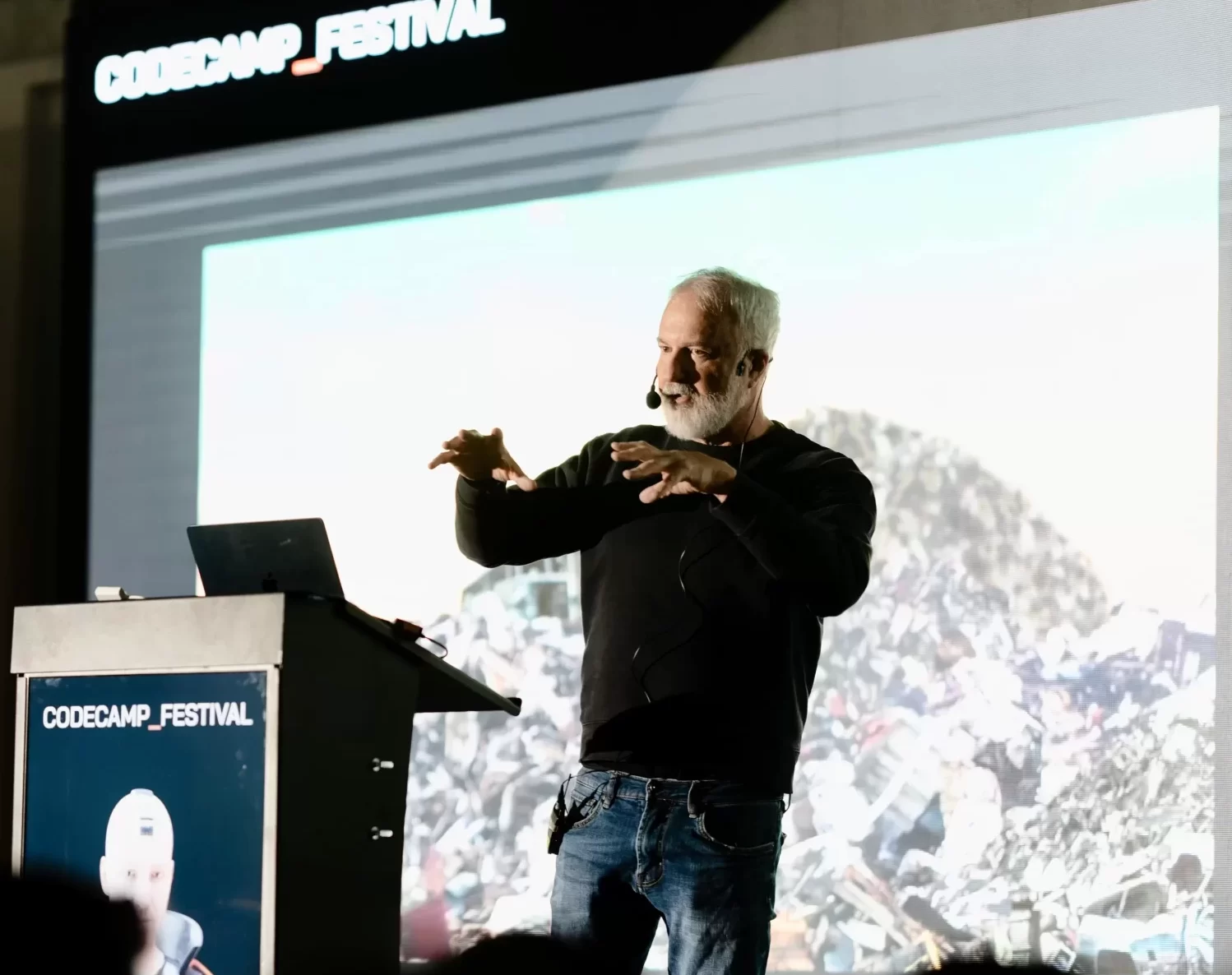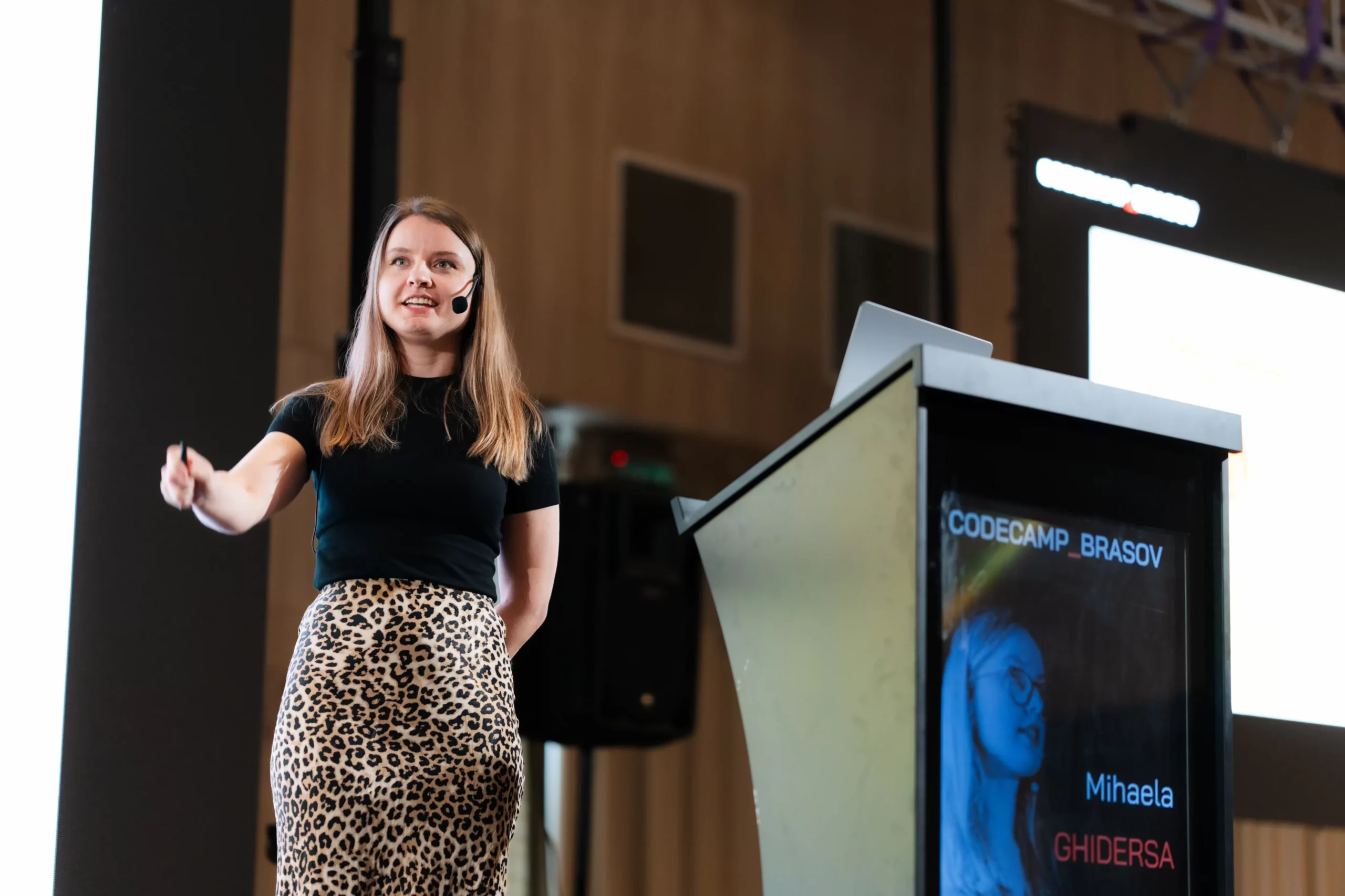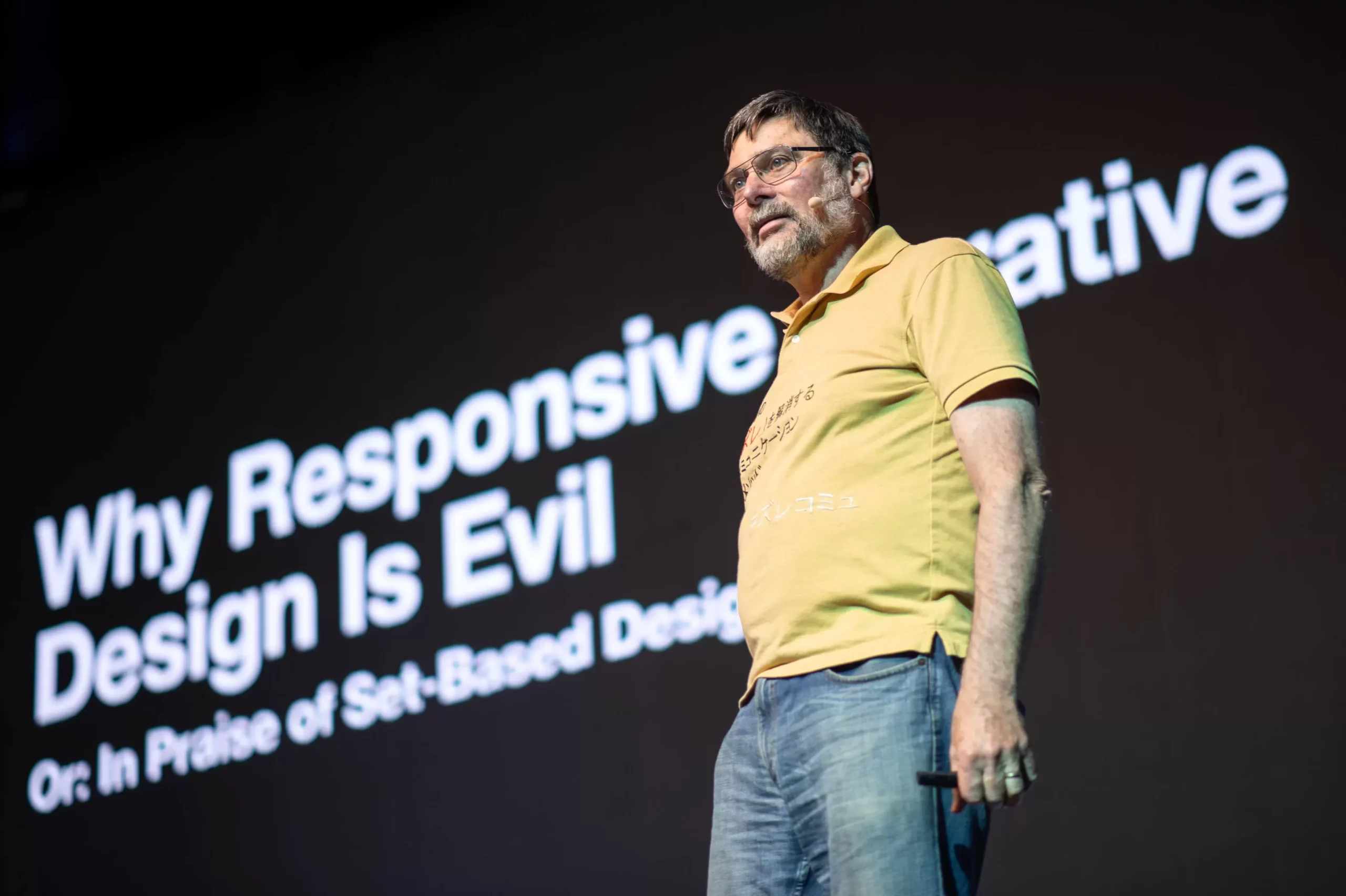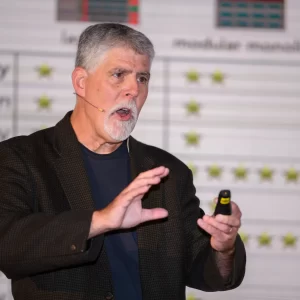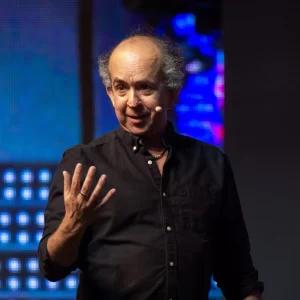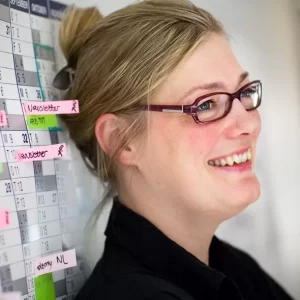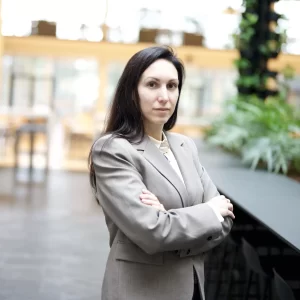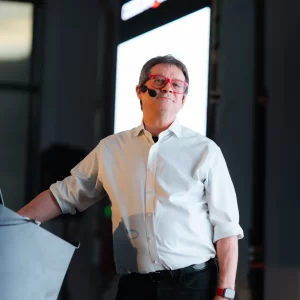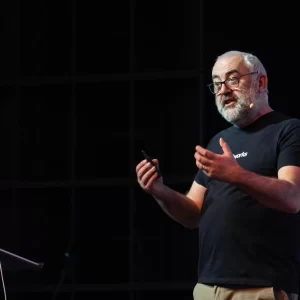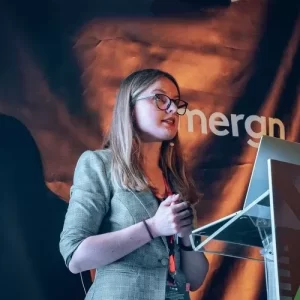Codecamp_Festival
8 May 2025 _ Hotel Caro, Bucharest
A complete experience
14 superheroes
2 top-notch keynotes
3 stages
New connections
Food and drinks
Concert & afterparty
Codecamp_Festival is a one-of-a-kind experience, mixing learning from the best speakers out there, from all over the world, with the glitz and glamour of an actual music festival.
Three incredible stages, two inspiring keynotes, seeing your superheroes up close and personal and making new connections, in a laid-back and friendly scenery, who said learning can’t be fun?
The speakers
Meet the superheroes that changed the game in software development.
Yeap, they’re all coming to Romania! Grab a coffee with them and prepare to be starstruck.
The stages
Woodstock
Factory
Portal
Holiday Village
Masterclasses
Stage Partners

Sustainalytics
Sustainalytics has the awesome mission to provide the insights required for investors and companies to make more informed decisions that lead to a more just and sustainable global economy.
They have an innovation practice department focusing on research and integration of Artificial Intelligence/Machine Learning, Information Retrieval, and Digital Curation technologies into the company’s information acquisition, analytics, and research processes.
Sustainalytics has been a Morningstar company since July 2020, continuing to empower investors’ success through responsible investment solutions and products.

Systematic
At Systematic, we believe that a line of code created with intelligence and innovation can advance societies, boost businesses, and change lives for the better. Systematic is an international IT company with a Danish-inspired work culture.
Established in 2017 in Romania, our goal has been on consolidating a highly skilled professional community responsible for developing our products for the Defence, Healthcare, Renewables, Library, and Learning sectors.
We know that the right solutions require the right people – and that is why we will always invest heavily in their development. Together, we will never stop developing.

Societe Generale Global Solution Centre
Societe Generale Global Solution Centre is a business solution center for Societe Generale, one of the largest European financial groups. We provide high-quality professional services for more than 35 countries in various fields of activity –Information Technology, Finance & Accounting, Human Resources, Know Your Customer, Compliance. Our mission is to build together a better and sustainable future through responsible and innovative solutions. Our diverse and flexible work environment offers the means to learn and develop for both experienced and young professionals. Here you will find the resources to continuously learn and improve your skillset (or, why not, to explore a completely different career path) through international exposure, transversal projects, numerous learning platforms or internal mobility opportunities.
Holiday Village Designer

DB Global Technology
DB Global Technology is Deutsche Bank’s technology centre in Central and Eastern Europe. Set-up in 2013, Bucharest Technology Centre has developed a strong team of +1,800 professionals, demonstrating a high level of engineering competence and commitment.
Bucharest Technology Centre has reached an impressive level of maturity, developing applications for important business lines such as Private Bank, Corporate Bank, Investment Bank, Risk, Compliance & Anti-financial Crime, Treasury, Non-Financial Risk, Credit Risk, as well as Global Procurement.
Bucharest teams cover a wide range of technology disciplines: software development, IT architecture, cyber security, information security, business advisory and functional analysis, quality assurance & testing, Agile, project management.
Unlock Your Potential
Our team is not only multi-talented, but also diverse: we value our 44% female employees, sparking creativity and innovation every day. We are building careers from the start and increase our junior intake every year. We grow our people to assume increased leadership and group-wide responsibility. We are part of the #EngineeringCulture, playing a dynamic role in the Deutsche Bank’s technology transformation.
We have a robust and hands-on culture dedicated to continuous learning, knowledge-sharing and technical skill development. This engaging and tailored learning experience is accessible at every career stage.
Come and meet us during Codecamp 2025.
Expo Partners

Thoughtworks
We’re a leading global technology consultancy that integrates strategy, design and software engineering to enable our clients to thrive.
For over 30 years, we’ve been at the forefront of digital innovation and have vast experience creating adaptable technology platforms, designing world-class digital products and harnessing the power of data and AI to unlock new sources of value.
We’re laser-focused on transforming your digital journey so you can make extraordinary impact today, tomorrow and beyond.

BenQ
BenQ Corporation – a world-leading human technology and solutions provider driven by the corporate vision of “Bringing Enjoyment ‘N’ Quality to Life” to elevate and enrich the aspects of life that matter most to people today – lifestyle, business, healthcare, and education. Set apart by the unique philosophy of “Because it matters,” BenQ is committed to empowering people to live better, increase efficiency, feel healthier, and enhance learning through people-driven, innovation-fueled products, services and solutions. Because it matters, BenQ will continue to utilize substantial resources and proven expertise in product design, visual display, mobile solutions, and network convergence technologies with the hope of delighting the world, offering a broad range of products, services, and solutions: digital projectors, professional monitors, interactive large-format displays, imaging solutions, mobile computing devices, and LED lighting solutions.

AD/01
At AD/01 we solve real challenges. Harnessing the latest tech with the freshest thinking, we enhance countless people’s daily food experiences with smart solutions around the world.
Ravers

UniCredit
At UniCredit, we explore bold, innovative ideas, delivering products and solutions that enable people to live more successful and fulfilling lives. Our ambition is to be the Bank for Europe’s future – and we look for people who are willing to walk with us in this direction.
With UniCredit, future candidates can unlock their fullest potential. We strive to attract and retain individuals who embody our Values of Integrity, Ownership and Caring and will become active contributors to achieving our Purpose of Empowering Communities to Progress.
Community Partners

How To Web
The story of How to Web started in early 2009, at a point when the IT industry was centered on outsourcing activities, while the few individuals and companies working on their own tech products back then were disconnected and didn’t have access to learning and networking opportunities. Year after year, we supported companies to shift their focus from outsourcing to innovation, we’ve learned to differentiate and innovate and we’ve grown together fuelled by he power of an ever-stronger, interconnected community.

IT School
IT career accelerator!
Develop your potential and step into the IT universe!


RubikHub
Rubik Hub is more than a physical place, it is an emerging community, formed of people with mutual values, a desire to grow and a common VISION: live in a world where each person can reach the best version of themselves and drive positive impact.
We embarked on a brave MISSION, to develop and connect communities, together with whom we inspire, educate and accelerate startups from 0 to 1 and create global successful businesses.

Scoala Informala de IT
The Informal School of IT is the largest platform in Romania that brings together industry leading professionals with talented people driven by a desire to develop their unique IT skills.
Our hands-on approach, combined with a permanently updated curricula and convenient timeframe proved to be a successful recipe for our alternative school.


Impact Hub
Impact Hub Bucharest is a place for people with ideas for a better world to work, meet, learn and connect! Founded in 2012 Impact Hub Bucharest operates in Bucharest, near Universitate metro station.

Innovation Labs
Are you a young visionary that aims to build a tech start-up?
Join us to turn your tech vision into a product through fine-tuned mentorship, access to bleeding-edge technologies and interaction with top companies, mentors and angel investors.
Are you an innovative company looking to connect with the most vibrant innovation ecosystems?
Join the main university-based tech start-up accelerator program in Romania – and be part of a network that fosters innovation, collaboration and digital transformation.

Bucharest Software Craftmanship
This is a community for those who care and are proud of what they do. For those developers, regardless of how experienced they are, who want to improve and master their craft.
This is a place for those who believe that being average is just not good enough.
The Manifesto for Software Craftsmanship
As aspiring Software Craftsmen we are raising the bar of professional software development by practising it and helping others learn the craft. Through this work we have come to value:
• Not only working software but also well-crafted software
• Not only responding to change but also steadily adding value
• Not only individuals and interactions but also a community of professionals
• Not only customer collaboration but also productive partnerships

Voxxed Days Bucharest
These developer conferences bring together popular speakers, core developers of popular open-source technologies and professionals willing to share their knowledge and experiences. With several tracks on different topics, attendees can satisfy their curiosity and learn new skills while enjoying and having fun!

Asociatia pentru Dezvoltare, Creativitate si Excelenta in Software | ADCES
Experience & Learn
.Net, C#, Azure & SqlServer


Cartea Daliei
Because we wanted to help through our experience the future generations of adults.
Because we wanted to offer modern learning contexts accessible to all children, regardless of the environment they come from. A place where they can prepare for the jobs that they will have in a modern digital world, jobs that require coding skills and the use of technology.
Because we wanted more and better.
And especially because today we are here to put all these things in value by involving the community in disrupting the Romanian education system, together with partners such as IT companies, schools, authorities, and IT professionals.

Bucharest Big Data
This is a group for anybody interested in Big Data: what it means, what tools are there and how to use them, how others are analyzing the data and what is the value they get out of it. Meetups will be both socializing and learning ones. If you are interested about the topic join us.

Romanian SQL Server User Group
Founded in 2005, Romanian SQL Server Group (ROSQL) brings together Database Administrators, Developers, Business Intelligence Professionals, and students interested in or working with Microsoft SQL Server and related technologies. We meet to discuss and socialize, to find out what’s new, to share knowledge (and of course to share pizza).

Mindspace
We believe that when people are excited about coming to work, businesses thrive. Our members enjoy better employee engagement and satisfaction, realize higher productivity and innovation, and attract and retain the best talent. We give business owners the peace of mind to focus on their core business priorities, while we take care of the rest.
Media Partners

DevJob.ro
DevJob.ro is the first Romanian IT job board built with Software Engineers in mind.
Our goal is to bring more transparency, openness and diversity to the Romanian IT market.
We want to make the job search process for Software Engineers more enjoyable by gathering all job postings in Romania and presenting them in an informative way.
Our portal is not only for Developers but for everyone working in the IT industry: Engineers, SAP and System Admins, Product Managers, QAs and UX/UI Designers!

Romania Pozitiva
Good things about Romania.
Welcome to the positive information and education platform, RomâniaPozitiva.ro!

TechEvents
TechEvents is a free mobile app that brings together all the important tech events in the industry, with the aim of supporting the harmonious development of the IT community in Romania.

IQool


